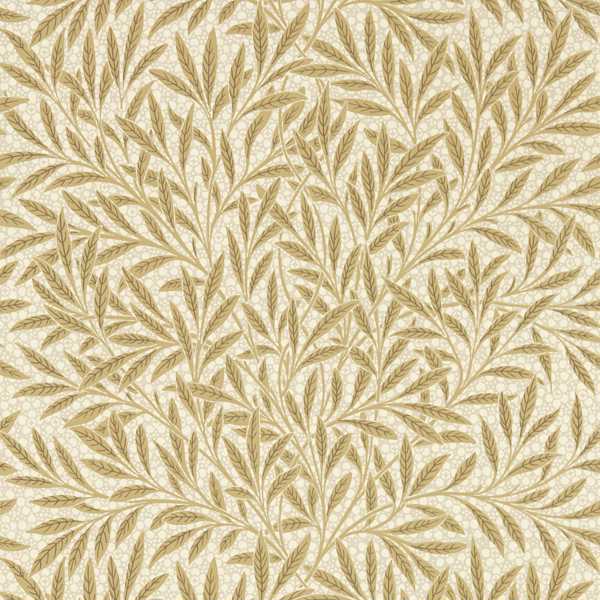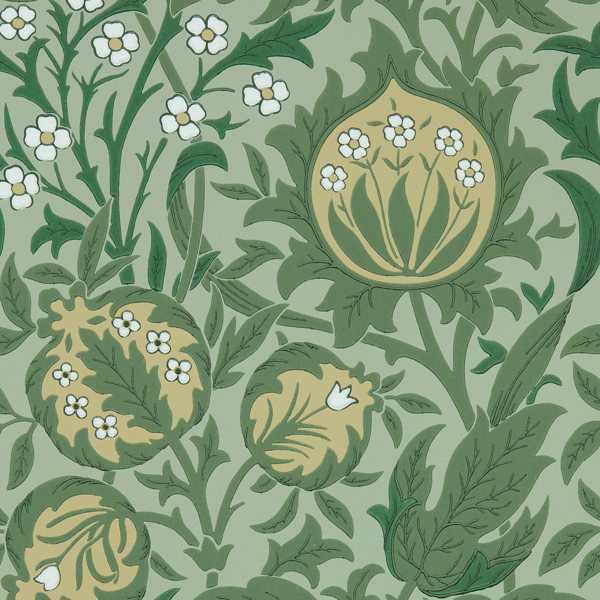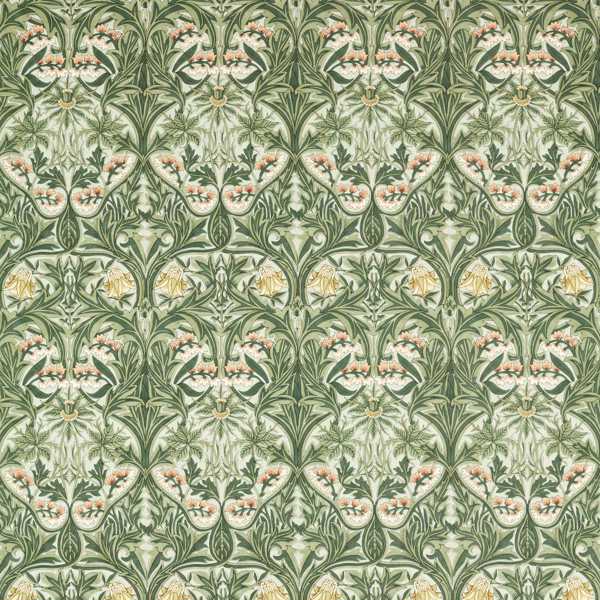Stepping Inside A Maximalist Interior: Emery Walker’s House with Senior Curator Mallory Horrill
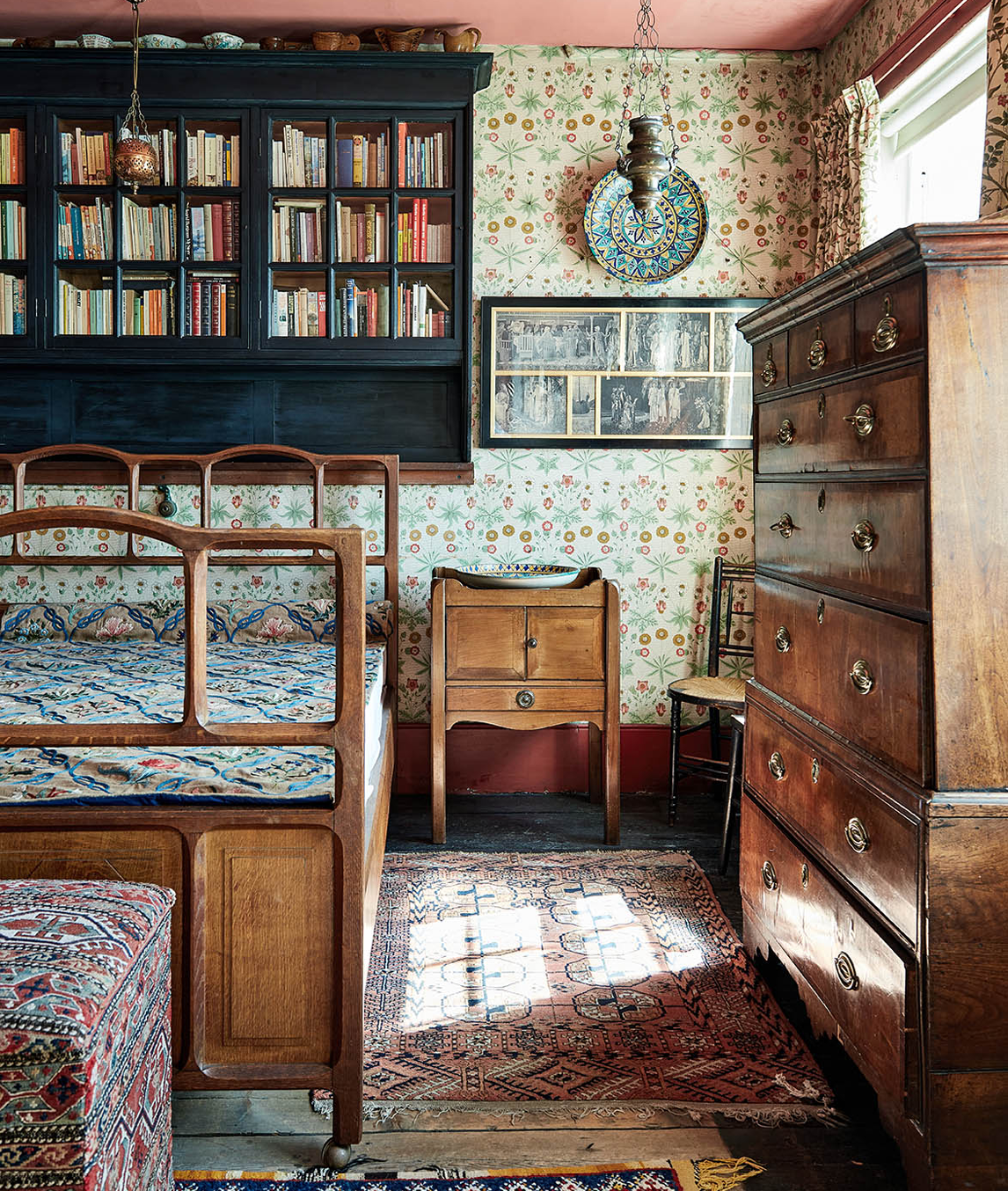
Our latest collection, Emery Walker’s House, draws from the historic Arts & Crafts home of one of William Morris’s closest friends and collaborators. Weaving together craft histories, iconic design and a love of creativity, this collection is filled to bursting with tales to tell.
To help us understand the home that inspired the collection, we couldn’t ask for a better guide than PhD candidate at UCL, Mallory Horrill. Mallory isn’t just the Senior Curator at The Emery Walker Trust. She’s also Curator of Collections and Exhibitions at the William Morris Society, just a few steps down the road in William Morris’s old abode.
Hi there, Mallory. Can you tell us a little about what draws you to the creative relationship between Sir Emery Walker and William Morris?
What I find most intriguing about Morris and Walker’s friendship is how it highlights Morris the person, momentarily setting aside, Morris the designer. It’s not to say that Morris the artist doesn’t make an appearance in our House’s story, as Morris and his work were nearly inextricable. But rather that through Walker one glimpses Morris as a friend, a neighbour, a collaborator, a father and so forth. Our site and history adds an important chapter to the Morris story and the Arts & Crafts circle.
Can you tell us some of the challenges of being Senior Curator at Emery Walker’s House, one of the last great vestiges of the Arts & Crafts movement?
I feel very fortunate to manage the care of such a historically important time capsule. However, curatorial roles are not always glamorous. They range from research and conservation cleaning to pest checks and furniture polishing.
One of the particular challenges at our site is our small size. The House is a Victorian terrace property and was a family home. As such we are limited to welcoming eight visitors on our tours and can only have visitors through the House on a maximum of 90 days a year. This is due to structural capacity and collection care considerations. While a challenge, I also view the circumstance as our strength, because it maintains the spirit of the Walker’s home and ensures its future care.
We have to say, we just love the lock of Morris’s hair lovingly kept by Sir Emery Walker. Have you a favourite object in the house?
We have such a treasure trove of pieces at the House making it a challenge to have a favourite object. At the moment I’m quite drawn to a set of claret glasses.
These glasses were designed by Philip Webb (1831-1915) an English architect, designer and close friend of Walker and Morris. Webb is best known as the architect of Red House, the Morris’s first marital home. What is lesser known about Webb is that he designed table glass specifically for the Morris family to use at Red House. The glass was later available for public consumption from 1870 through Morris, Marshall, Faulkner & Co. (later Morris & Co).
The glass was manufactured by Powell and Sons of Whitefriars, London, who were leading glassmakers of the Arts & Crafts movement. We have a range of Webb glass at the House, as Walker was bequeathed quite a few of Webb’s personal possessions in 1915.
These particular glasses are hand blown and feature eight ornamental prunts along the bowl, which would have been hand applied using hot glass and then manipulated with metal tools. For me these glasses highlight a medium that is less celebrated within the Arts & Crafts field, they speak to another important person in the circle of Walker and Morris and they’re such wonderfully original designs. I enjoy imagining how Webb and later the Walker’s used the glasses, perhaps in toasting special occasions.
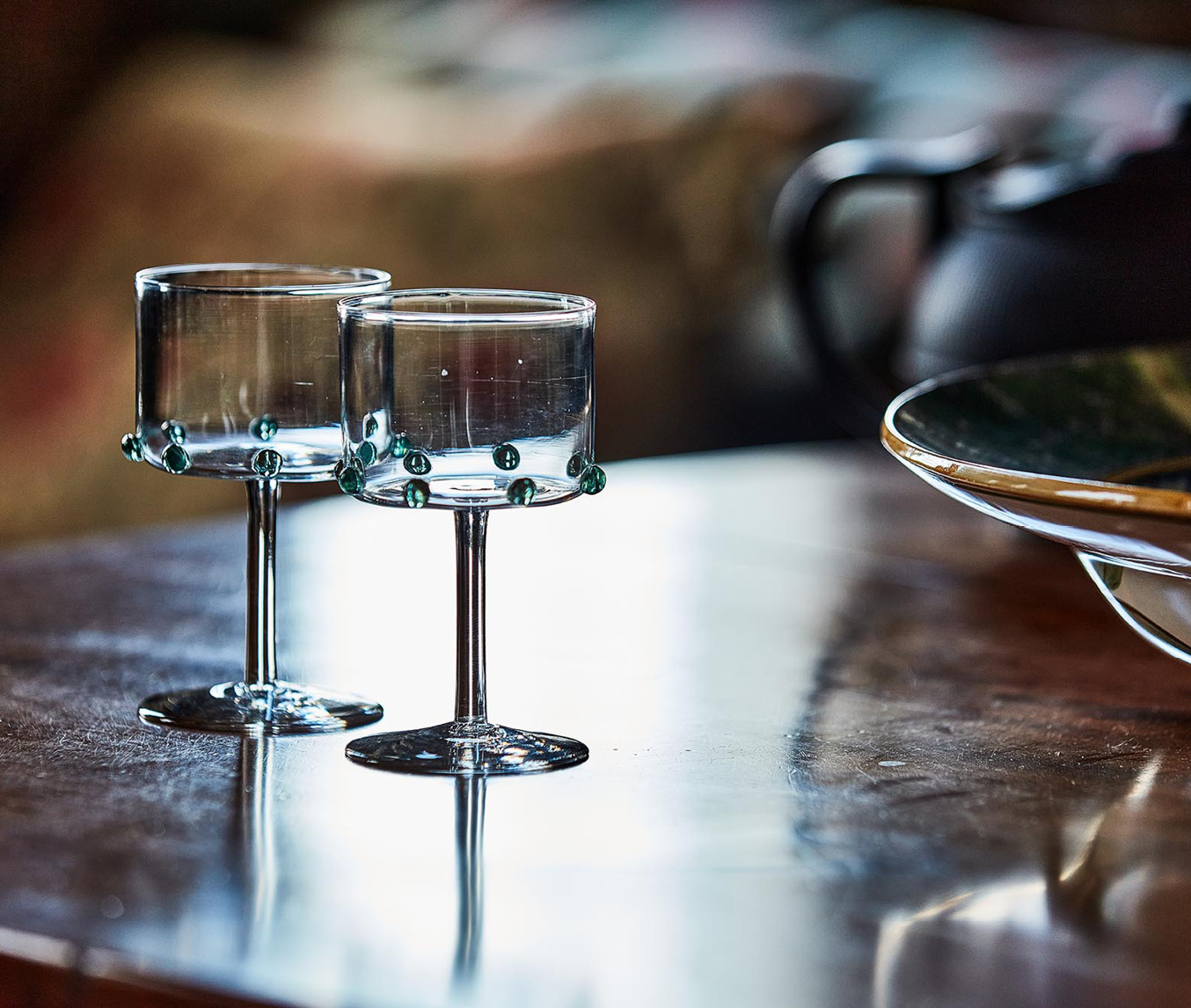
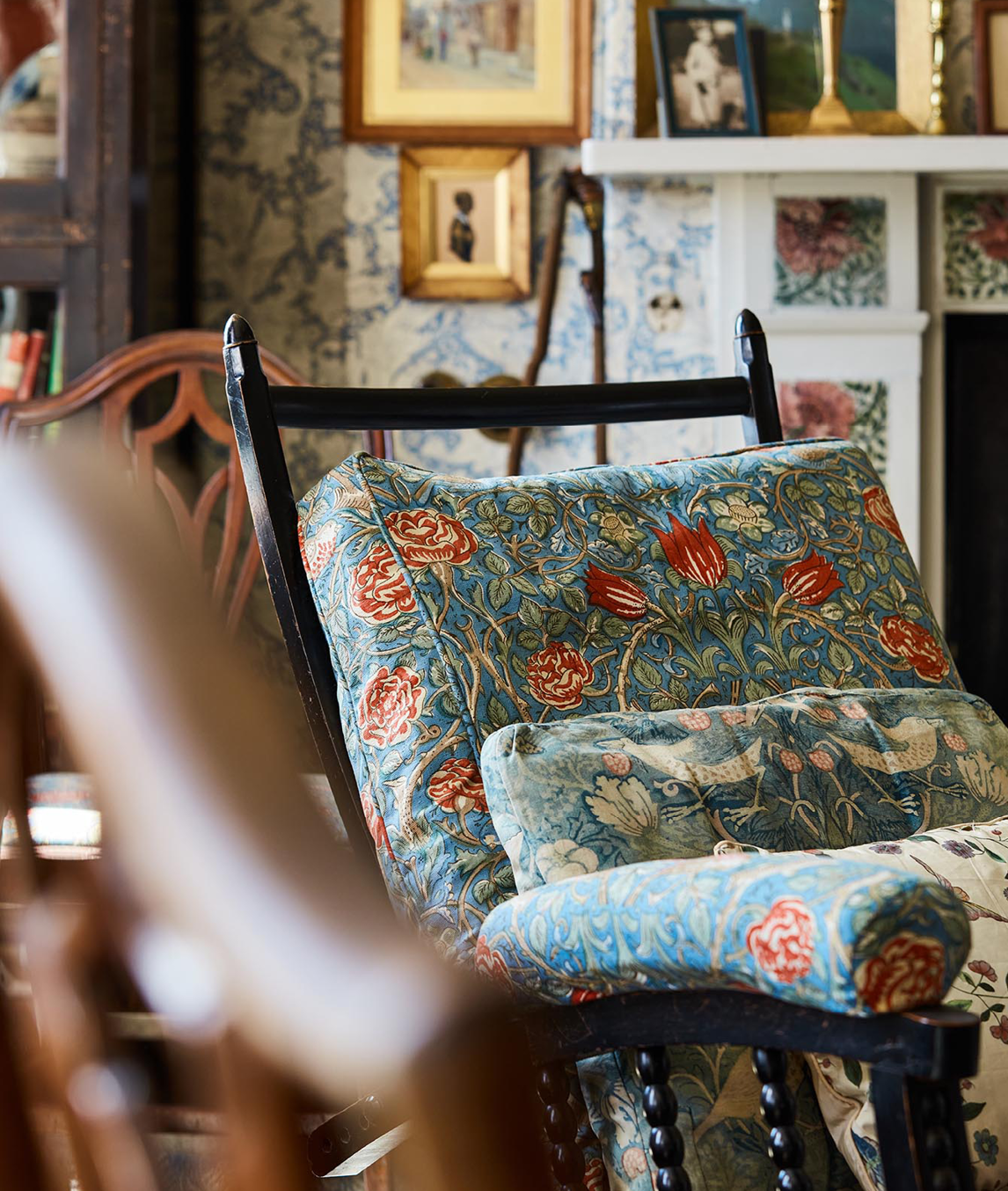
Besides their shared interest in the Hammersmith Branch of the Socialist League, of which Morris was Treasurer and Walker the Secretary, can you explain how printing bound the two men together?
Emery Walker occupied a key position in the world of typography and printing in the late 19th and early 20th centuries. He ran a successful printing company that he co-founded in 1886, and served as mentor and inspiration to many within the private press movement. In 1888 Walker delivered a lecture to the Arts & Crafts Exhibition Society on typeface design. Among the attendees was Morris who had long wanted to print his own authored works. However it wasn’t until Walker’s lecture that Morris had what his daughter May called a ‘eureka’ moment, as the lecture inspired Morris to design his own typefaces.
Morris offered Walker a partnership in what would become the Kelmscott Press. Walker politely declined but became a partner in all but name as Morris regularly sought his advice and technical expertise. If Walker did not have the knowledge himself he had a significant network to draw upon to find the answer. Walker’s advice on all aspects of the Kelmscott Press cannot be overstated, from introducing Morris to companies that could supply the highest quality handmade paper to taking enlarged photographs of fonts in medieval manuscripts which allowed Morris to create his three iconic Kelmscott Press fonts, Walker was critical to the success of Morris’s Press. Morris said as much in 1895 when he was quoted saying “I was not much a printer until Walker took me in hand”.
We have in our collection a Kelmscott Press printing block of three initials, it’s one of several personal mementoes kept by Walker in memory of Morris. It testifies to both their friendship and to how much Walker valued his involvement with the Press.
Emery Walker’s House isn’t just a record of the relationship between William and Sir Emery. There are objects of incredible craft quality that are testament to the close bond between the women and children of the families, too. Could you elaborate on that a little?
The House holds exceptional pieces that reflect the friendship and community of the Arts & Crafts Movement. Our textile collection speaks particularly well to the bonds between the Walker and Morris women, that being Walker’s wife and daughter, Mary Grace and Dorothy and Morris’s wife and two daughters, Jane, Jenny and May.
The Morris ladies were tremendously talented in needlework and were integral in elevating the skill to an art form. Jane initially managed the embroidery department at Morris & Co., with May later taking up the mantle when she was just 23.
One of May’s innovations when she managed the department was to develop embroidery kits that could be purchased and worked at home. These kits were more affordable than pre-made, bespoke textile designs, bringing the product range to a wider audience. We have a wonderful example of one of these kits at the House, it’s a stunning silk blue cushion with pink flowers and silver, blue leaves. The cushion kit was designed by May, but worked by Dorothy, which illustrates both the women’s creativity and close friendship.
We have a number of textile pieces that highlight the bond and skill of the women in both families, some of which you have included in your range, that being May’s coverlet and Flowers by May. For those interested in hearing those stories please visit our website or join us on our guided House tours.
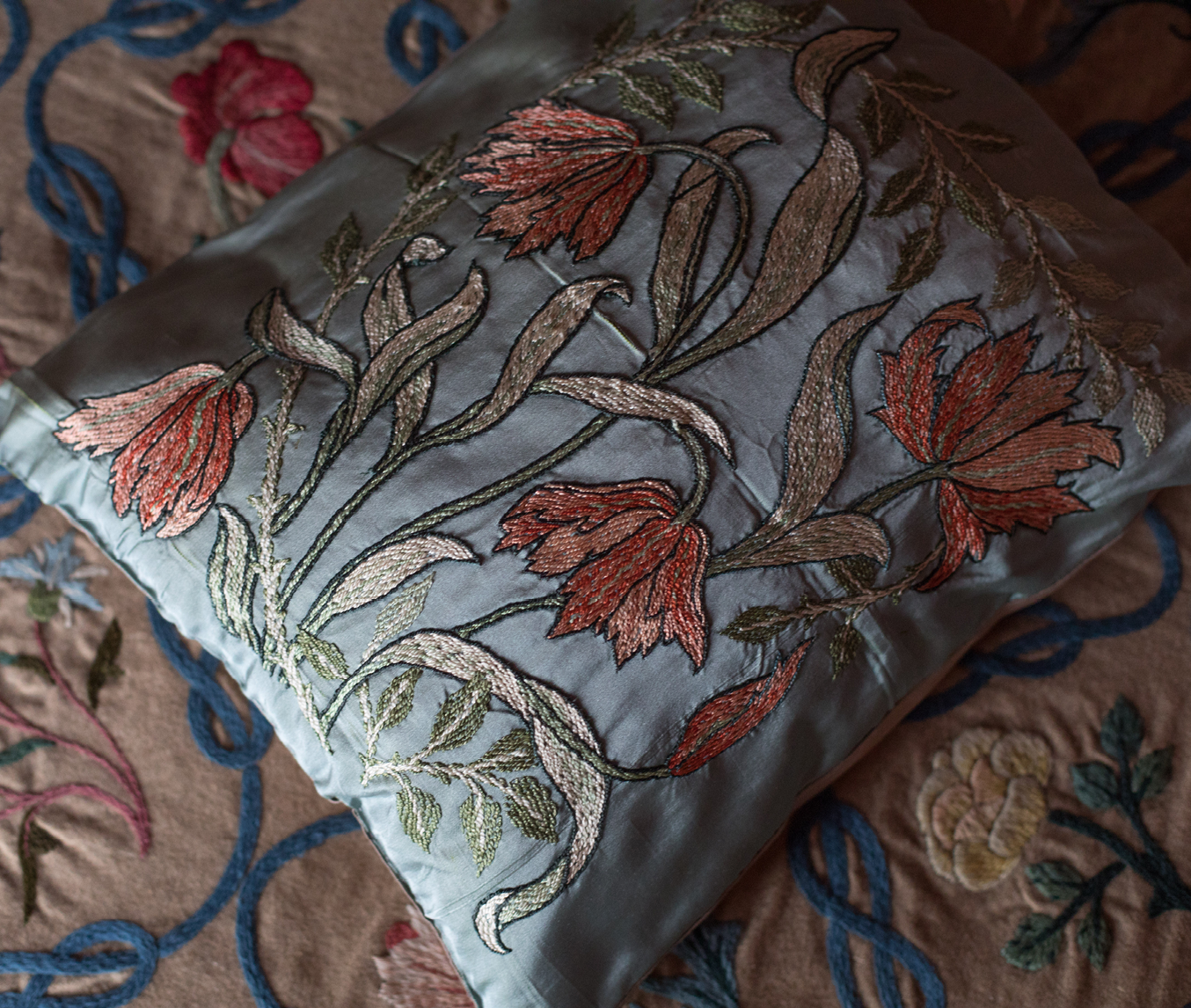
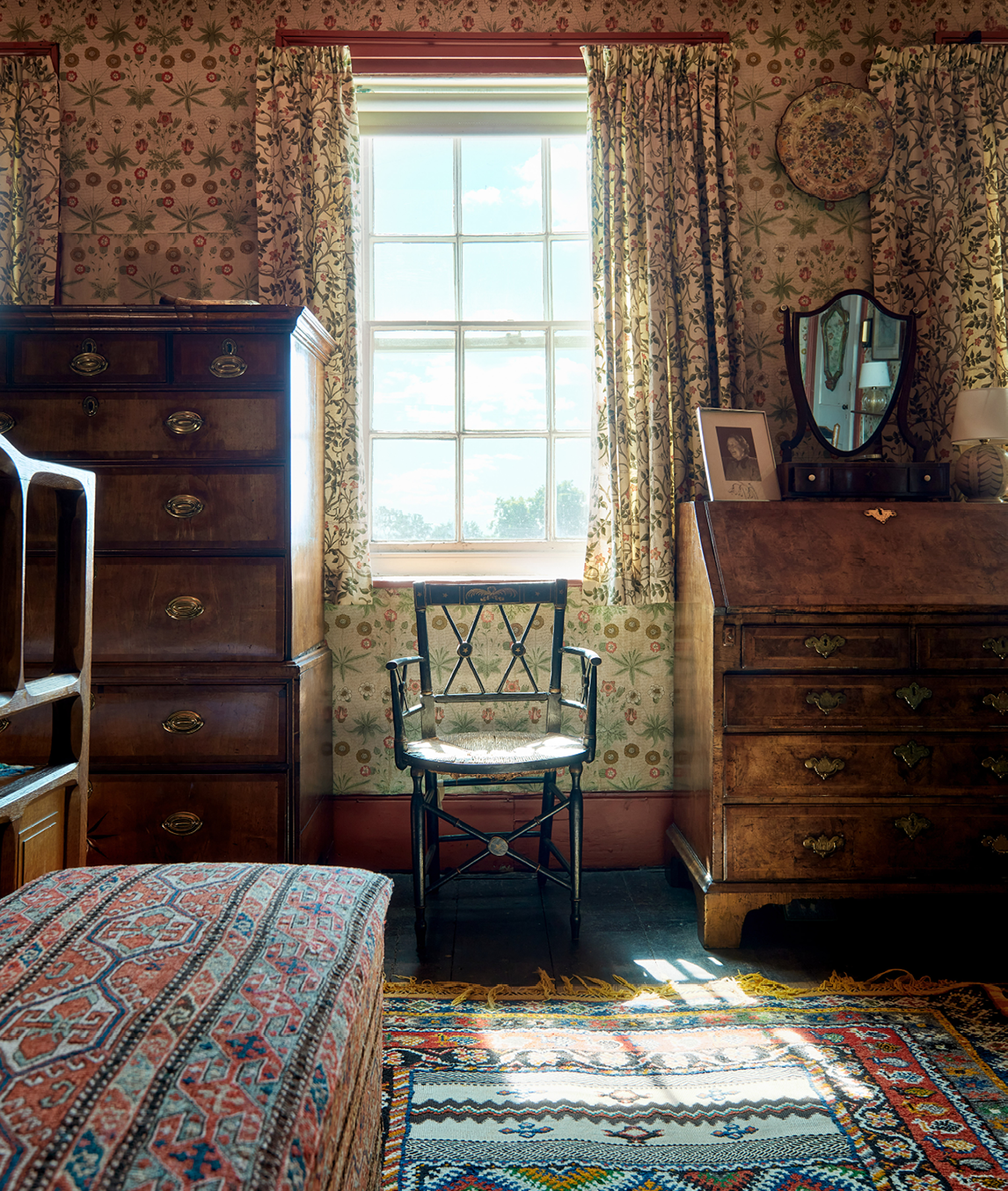
It was a real pleasure to work with you to produce the Emery Walker’s House collection, combining brand-new designs and reawakened Morris & Co. patterns with designs inspired by artefacts found in the home. Is there a design in the collection you’re particularly drawn to, or one you’d most like to see in your own home?
It’s been wonderful, we’ve so enjoyed sharing our story more broadly and seeing such familiar patterns come to life and in some cases be slightly reimagined.
That is quite a tricky question, as I’ve been blown away by the entire collection. But put on the spot, I would have to say Dorothy’s Kilim fabric. While I adore the Morris & Co. papers and fabrics, the kilim is less expected but well highlights how those in the Arts & Crafts Movement took inspiration from other cultures and travel.
Both Emery and his daughter, Dorothy, were avid travellers, they journeyed across Europe, North Africa and the Middle East. They brought back many souvenirs from their trips that feature throughout the House, such as Moroccan and Iznik ceramics, brass vessels and a range of rugs and textiles, such as the one that inspired your design of Dorothy’s Kilim fabric. For me this design well reflects an Arts & Crafts interior and rather poignantly speaks to the Walker’s interests and family holidays.
Emery Walker’s House is open March through November, with guided tours running on Thursdays and Saturdays at 11am and 1pm. Pre-booking is essential, and tickets can be booked here.
posted on 31 Mar 2023 in Interiors

